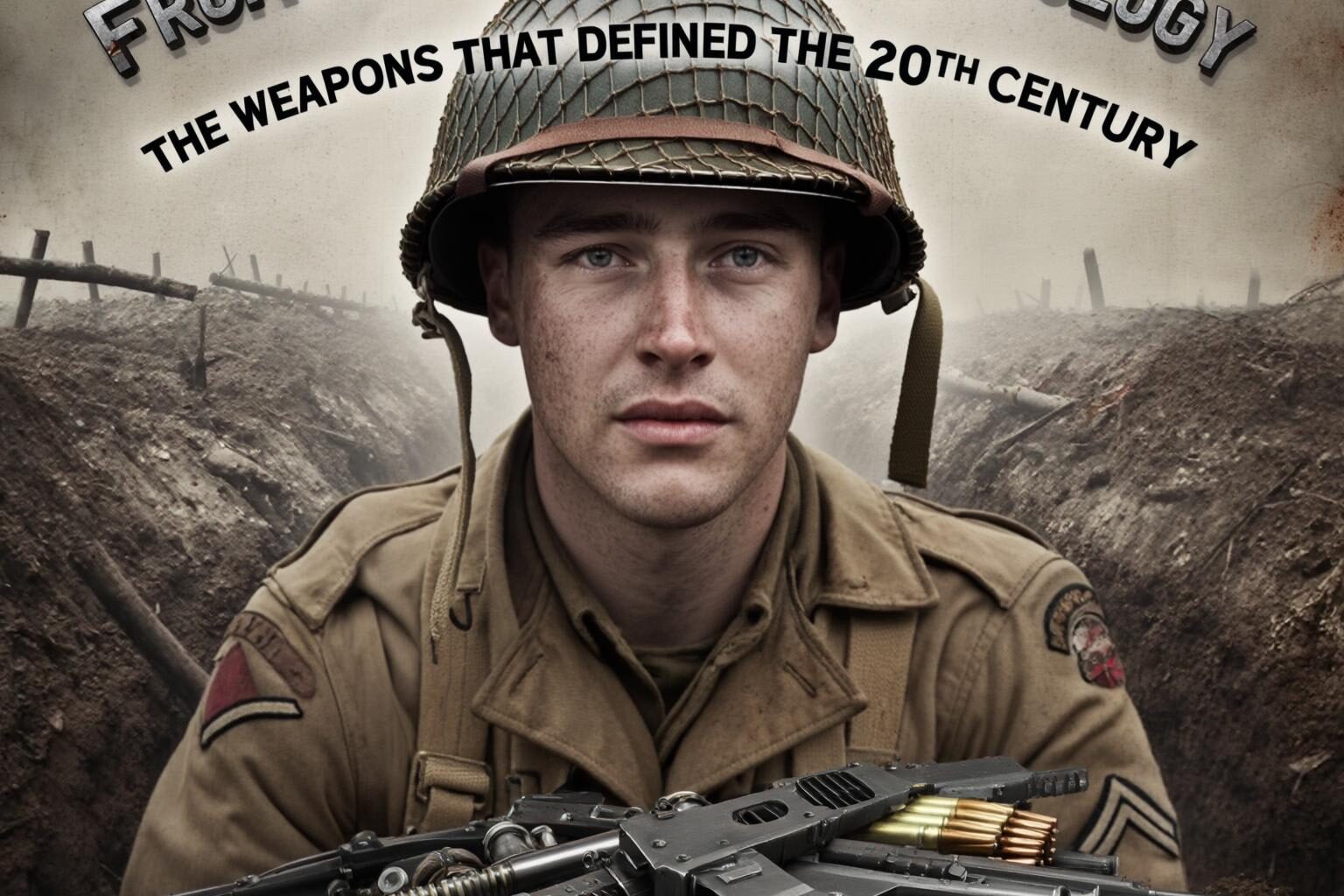The 20th century was a time of unprecedented change. It was an era marked by two world wars, the rise and fall of empires, and a technological revolution that transformed every aspect of life—including the way wars were fought. From the muddy trenches of World War I to the high-tech battlefields of the late 1900s, the weapons of the 20th century didn’t just change the course of conflicts—they changed the course of history.
The Trench Warfare Revolution: World War I
When World War I erupted in 1914, most armies were still equipped with weapons and tactics from the 19th century. But the brutal reality of trench warfare quickly forced innovation.
Bolt-Action Rifles and Machine Guns:
The standard-issue bolt-action rifle, like the British Lee-Enfield or German Mauser, was accurate and reliable. But it was the machine gun—capable of firing hundreds of rounds per minute—that truly defined the trenches. The Maxim and Vickers guns turned open ground into killing fields, making frontal assaults nearly suicidal.
Artillery:
Heavy artillery barrages became the deadliest force on the battlefield, responsible for more casualties than any other weapon. Shells rained down day and night, reshaping landscapes and shattering nerves.
Chemical Weapons:
World War I saw the first large-scale use of poison gas—chlorine, phosgene, and mustard gas—adding a new, terrifying dimension to warfare. Gas masks became essential gear for soldiers.
The Tank:
Desperate to break the stalemate, the British introduced the tank in 1916. These armored vehicles could cross trenches and barbed wire, signaling the dawn of mechanized warfare.
World War II: The Age of Mechanization and Air Power
The Second World War was a proving ground for new weapons and strategies.
Submachine Guns and Assault Rifles:
The German MP40 and Soviet PPSh-41 gave infantry unprecedented firepower at close range. The war also saw the debut of the assault rifle, with the German StG 44 setting the template for future designs.
Tanks and Armored Vehicles:
Tanks like the Soviet T-34, German Tiger, and American Sherman became the backbone of modern armies. Armored warfare and blitzkrieg tactics changed the speed and scale of battles.
Aircraft:
The airplane evolved from a reconnaissance tool to a weapon of mass destruction. Fighters, bombers, and ground-attack planes dominated the skies. The Battle of Britain, the bombing of Dresden, and the atomic bombings of Hiroshima and Nagasaki all underscored the power of air warfare.
Naval Power:
Aircraft carriers replaced battleships as the kings of the sea. Submarines, especially the German U-boats, threatened supply lines and forced new tactics in naval warfare.
The Atomic Bomb:
The most devastating weapon of the century, the atomic bomb, ended World War II and ushered in the nuclear age. Its destructive power changed geopolitics forever.
The Cold War: The Arms Race and the Threat of Annihilation
After 1945, the world entered a new era of tension and technological competition.
Nuclear Weapons:
The U.S. and Soviet Union built vast arsenals of nuclear bombs and intercontinental ballistic missiles (ICBMs), creating the doctrine of mutually assured destruction (MAD). The threat of nuclear war loomed over the world for decades.
Jet Fighters and Strategic Bombers:
Supersonic jets like the MiG-21 and F-4 Phantom, along with long-range bombers like the B-52, made air power faster and deadlier than ever.
Guided Missiles and Rockets:
From the V-2 rocket of World War II to the cruise and ballistic missiles of the Cold War, guided weapons became central to military strategy.
Helicopters:
The Vietnam War showcased the helicopter as a versatile weapon—transporting troops, providing close air support, and evacuating the wounded.
Assault Rifles:
The AK-47, designed by Mikhail Kalashnikov, became the most widely used firearm in the world, symbolizing revolution and conflict from Africa to Asia.
The Digital Battlefield: Late 20th Century
By the end of the century, technology was transforming warfare in new ways.
Precision-Guided Munitions:
Smart bombs and guided missiles allowed for pinpoint strikes, reducing collateral damage and changing the nature of air campaigns.
Stealth Technology:
Aircraft like the F-117 Nighthawk and B-2 Spirit could evade radar, making them nearly invisible to enemy defenses.
Computers and Satellites:
Real-time communication, surveillance, and navigation became possible with the rise of computers and satellites, giving commanders unprecedented control and information.
Frequently Asked Questions (FAQ)
Q: What was the most influential weapon of the 20th century?
A: Many would argue the atomic bomb, due to its impact on global politics and the balance of power. Others might point to the AK-47 for its ubiquity, or the tank for revolutionizing ground warfare.
Q: How did technology change the way wars were fought?
A: Technology increased the speed, scale, and lethality of warfare, making battles more mobile and global, and introducing new domains like air and cyber.
Q: Are 20th-century weapons still relevant today?
A: Many, like the AK-47 and main battle tanks, are still in use, though modernized. The legacy of 20th-century innovation shapes today’s military technology.
Final Thoughts
From trenches to technology, the weapons of the 20th century didn’t just change the battlefield—they changed the world. They forced new strategies, shaped geopolitics, and left a legacy that still echoes in the conflicts and innovations of today. As we look to the future, the lessons of the last century remind us that every new weapon brings both promise and peril—and that the true power of technology lies in how we choose to use it.
